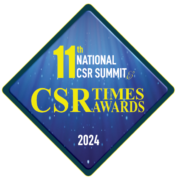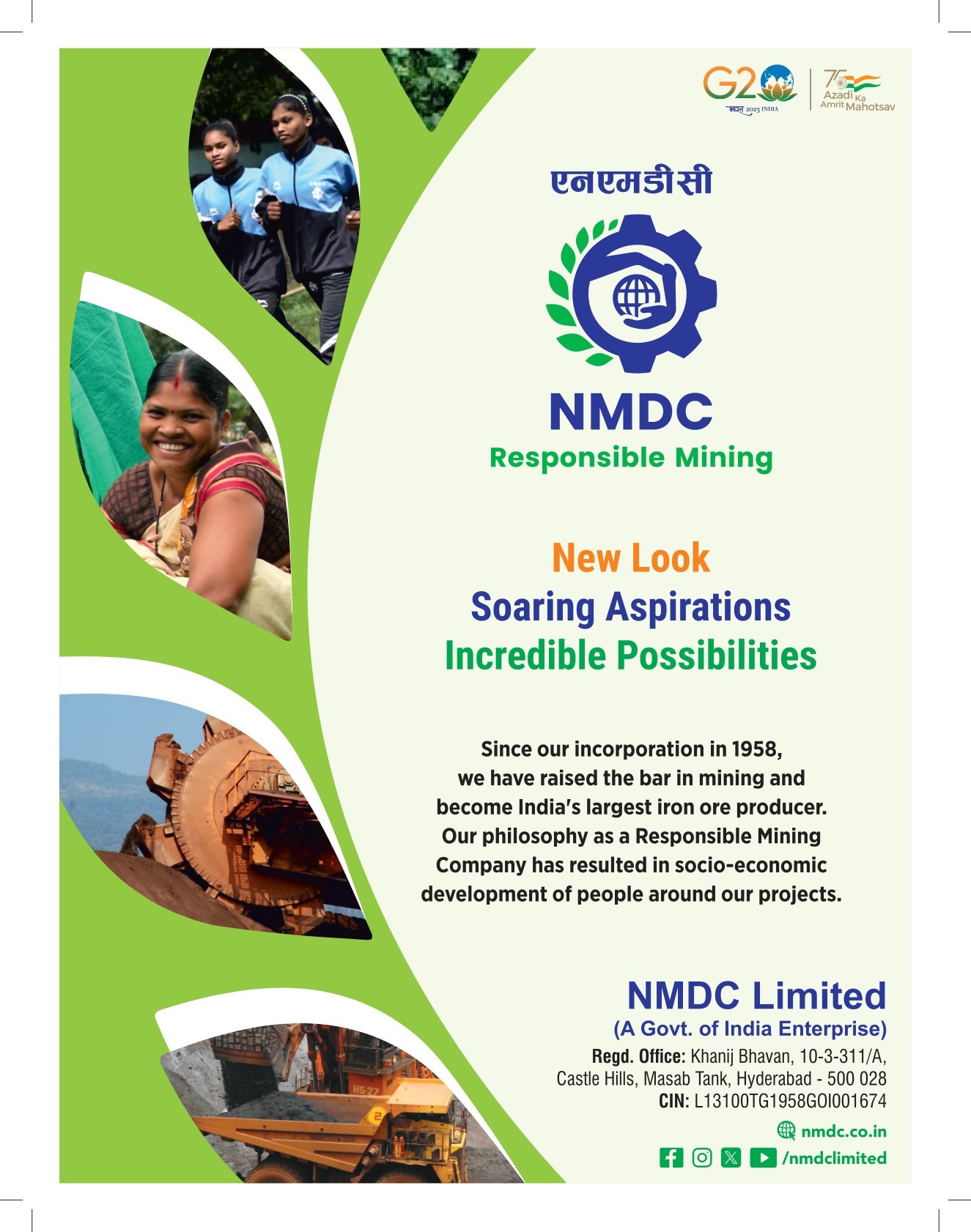
With the ever-evolving dynamic CSR landscape and the continuing deliberations on what goes into the CSR potion of success, there are 2 strong ingredients that have unarguably remained constant. Community and employee engagement have always been cited as two strong pillars of CSR, that uphold the fabric of CSR initiatives. These in turn shape a positive company culture.
CSR as a business approach effectively integrates social, ethical, and environmental concerns into the strategies, operations, and values of an organization. The broad framework of CSR encompasses actions that are beneficial for society. These actions can be grouped under sustainability efforts, philanthropic initiatives, and community engagement. There is a deep underlying sense of responsibility that drives CSR.
This responsibility is directed toward the company’s stakeholders which comprise communities, employees, customers, and the environment. In short, CSR cannot function bereft of its communities, employees, and a few other crucial drivers. If one were to delve into the community angle, community involvement can take different integration approaches. Community involvement for businesses may be registered through their financial or social support. Financial support can take up many forms such as supporting local charities or sponsoring local events. Organizing special events such as clean-ups, food drives, or similar initiatives. Participation by way of volunteering in local schools or community projects can also be undertaken.
The rule of thumb however for businesses to be economically viable, community-based CSR that is linked to their product or service is a definite go-ahead. This decision is laced with the dual advantage of using your business expertise and showing the human side of your business as well. Taking off from this concept restaurants or hotels provide food to the needy and underprivileged, builders provide free labor and construction material for community projects, and they may even opt for constructing schools, playgrounds, or public libraries for the community.
While the main objective of these community development and engagement opportunities is showcased as improving and benefitting the neighborhood and local community, these work wonders as publicity and visibility tools. A host of other benefits emerge, for example, local customers for many businesses are an important source of sales. One of the main advantages is an enhancement of your business reputation, which opens the doors for easy recruitment and a long-term benefit of the retention of employees. An existing goodwill and good relationships with local authorities of businesses can also yield immense benefits, that can impact its’ bottom line. It has been observed that more often than not, local authorities award contracts to companies that have recorded a high community involvement.
Community involvement also allows organizations to engage their employees on various levels that ultimately contribute to an overall engagement in the company. Socially responsible companies displaying high levels of community involvement also have high levels of engagement.
Notable research conducted has shown that social responsibility and employee engagement are interlinked. The onus of making community-driven programs participative and visible lies majorly with the HR, PR, and Marketing departments of organizations. Dedicated resources and strategies for sustainable engagement have to be meticulously drawn up and executed. Periodical reviews can rule out blips that may disrupt the functioning. Minor blips and creases can be smoothened and ironed out and booster shots monitored for the overall health and impact of a company’s community and employee engagement activities. In companies where these vital factors are missing, there is an apparent disconnect between the ongoing activities and the proposed engagement. Another looming reason for the disconnect is the “chequebook philanthropy” of most businesses, where the involvement doesn’t go beyond making donations and hence the feel-good factor and tangible benefits that should accrue are completely missing.
So, while a highly engaged workforce and a highly engaged community are considered key drivers of CSR success what are the ingredients that go into the recipe of a highly engaged workforce? A workforce is made up of engaged employees who contribute not only to the roles that they are hired for but even beyond to create a meaningful impact. Employees who feel an emotional connection and who win their company’s win as theirs.
Businesses can enhance employee engagement by including them in the decision-making about CSR. They can encourage employees to volunteer for community activities, give their staff paid time off for such activities, support charities that were chosen by their employees, employees can be encouraged to make tax-free donations to charity along with many other such motivators. Engaged employees work for the company’s financial benefits and add to their social responsibility agenda too in a meaningful way. Engaged employees are involved emotionally, physically, and mentally and contribute to their organization’s values and goals. It would be to say that Community and employee engagement are interlinked with CSR and constitute a symbiotic relationship. Motivated employees seek opportunities that allow them to fulfil their desire to bring in a meaningful change that goes beyond the job roles that they are expected to perform.
A few key positive outcomes of employee engagement are:
An enhancement of workplace morale
When there is a high degree of employee involvement in CSR initiatives, it inculcates a sense of pride and fulfilment in them which acts as a booster for job satisfaction and individual morale enhancement that translates into an overall morale increase within the organization.
A marked improvement in Team Dynamics
Joint and collaborative participation in CSR activities is crucial for excellent teamwork. Irrespective of the defined job roles, employees from all departments and all levels come together to execute a common task and this sees a rise in bonding, goodwill, and a sense of unity.
Attaining and retaining talent
It has been observed that prospective employees are attracted to an organization that is committed to CSR. Individuals especially millennials feel positively inclined towards taking up jobs in companies that are active in CSR and are socially responsible. Employees like to work for organizations that align with their values, and if an organization engages employees in CSR activities there are high chances of employee retention. The personal and professional development of employees is also taken care of by motivating and encouraging them to participate in improving community relations.
Contributing towards creating a positive company culture
A sense of giving back to society and inculcating social consciousness is developed when employees are engaged in CSR activities. A positive company culture is shaped and like-minded individuals are attracted to join the workforce.

Enhancing corporate reputation
With both the organization and employees working towards a common cause for the improvement of society the goodwill factor is strongly and firmly sewn into the corporate fabric. People view the organization as credible and good. With the participation of employees in philanthropic activities, the commitment of the company towards social responsibility is also showcased. This has a far-reaching positive influence on the brand image and standing of the organization in the community.
However, it is imperative that for creating a set of engaged employees the organization too should undertake a few important measures. The following are a few key ones-
The vision of the organization must be conveyed
The employees must be aware of and understand the CSR goals of the organization that they work for. Their contributions can then align with the company objectives. Motivation by way of transparency and clear communication should be provided to employees so that they are encouraged to participate.
Volunteering opportunities must be provided
Employees must be provided opportunities to engage in volunteering that does not disrupt their normal work schedule.
Contributions must be acknowledged and celebrated
The contributions of employees to CSR initiatives must be recognized and celebrated. Recognition programs and awards can be instituted and conducted regularly. Effective internal communication can reiterate the importance of employee engagement and involvement in CSR activities.
Regular communication with employee networks
Employees may share common interests and passions. This can be the foundation for creating employee resource groups and networks. Specific causes can be assigned to these groups which each group can take up and champion. A sense of community and ownership can be fostered when employees come together to drive initiatives.
Employee and community engagement are two sides of the same coin and both propel the organization forward, by executing corporate social responsibility initiatives successfully. Engaged and successful employees contribute to the welfare of society and the overall success and reputation of the organization.
A culture of engagement can be built by integrating CSR into the business strategies of companies. A positive effect that extends beyond the workplace and permeates the communities outside and to the world at large can be created. Through an excellent blend of community and employee engagement organizations can create a culture of “giving back’’ to society. Multi-locational companies can create regional teams. Employees as brand ambassadors can help coordinate the community relations activities Building an employee-driven corporate engagement is the need of the hour. Looking at this from a broad perspective – when organizations identify causes and direct the employees to take it up it is a top-down approach. A healthier option would be a bottom-up approach where employees genuinely participate in causes that they are passionate about.
The top-down approach also known as company-directed approach can be a challenge for mobilizing employee participation unless the objectives are articulated and explained. The company-directed approach needs clear instructions and if the employees are not suitably engaged or involved, this will remain far from successful. A bottom-up approach on the other hand can empower the employees through engagement.
A quick study of employee engagement would reveal that organizations that have a highly engaged workforce are –
- More Profitable
- Have better business outcomes
- Fewer attrition levels and higher employee retention levels
- Have an increased productivity
- Have a better work culture
- Attract good talent
- New employees become productive faster
- Good internal environment
The organization provides motivation and encouragement for its employees through goal setting and rewards, encouraging and providing opportunities for teamwork, encouraging life-work balance, and encouraging regular and clear communication. With community engagement as a vital pillar of CSR success, an active interaction with stakeholders comprising community members, NGOs, and CSR implementation organizations is needed.
The best practices for community engagement involve-
- Respecting the local culture and traditions and contributing towards them in some way
- Assessing community needs and aspirations
- Prioritizing long-term partnerships
- Offering support to the local communities through training, capacity-building initiatives, and skill-building programs.
These best practices ensure that the CSR programs undertaken are sustainable, effective, and in consonance with the local needs and priorities.
As per the recent 2023 trend employee engagement and volunteering efforts will contribute as a large part of CSR initiatives. Community engagement can receive assistance through employee engagement. Effective and purposeful leadership provides learning opportunities for its employees and encourages them to develop their network outside their organizations too. They take on their job roles not only specific to the organization that they work for but also for the benefit of their community. Employees who are actively involved in CSR activities by the organization also understand and appreciate how to engage with communities outside their respective organizations.
Employee and community engagement undoubtedly form critical components of any successful business and there is no denying their significant impact on productivity, employee retention, and overall company performance and reputation.
While employee engagement is indicative of the degree to which employees are motivated and invested enough to contribute to the company’s success, community engagement too is indicative of the company’s engagement and commitment to the development of its surroundings and the community in which it operates and which culminates in garnering goodwill, visibility, and positive company image from the community in turn. Disengaged, demotivated employees are detrimental to the existence of the business entity and so is a poor community response.
Companies are realizing and committing to high levels of employee and community engagement well aware that these no longer remain buzzwords but have transitioned towards becoming strong pointers of success in the corporate compass!



































